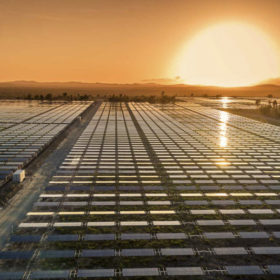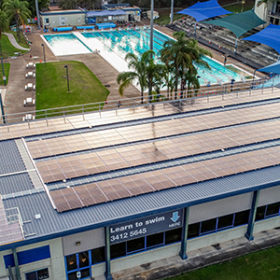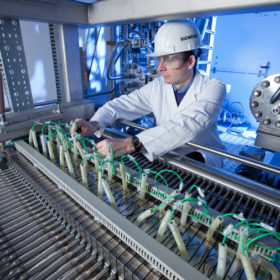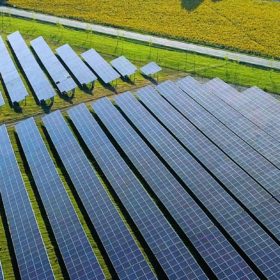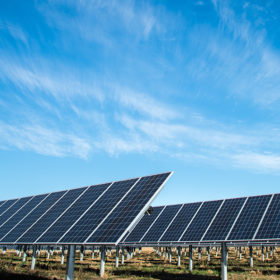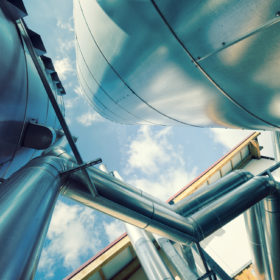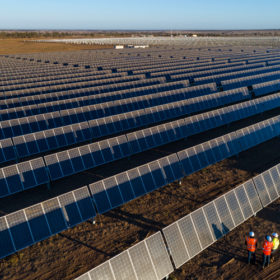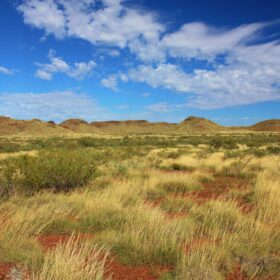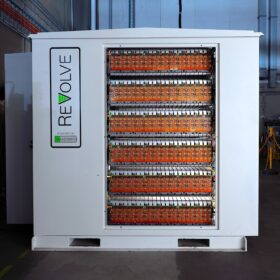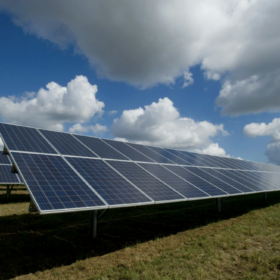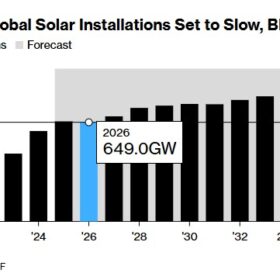QLD’s ‘cradle of coal mining’, Ipswich, set for 50 MW solar farm
A 50 MW solar farm at a vacant site in Karrabin is on the verge of construction after Ipswich City Council approved the project’s Materials Change of Use application. Ipswich may have once been Queensland’s ‘cradle of coal mining’ but solar is a sure sign of growing up.
SA Water large-scale solar and native revegetation symbiosis
SA Water’s highly ambitious $300 million solar uptake is proving a golden goose as a partnership with Succession Ecology to revegetate almost a tonne of native seedlings under large-scale solar arrays proves a win-win. The ground-mounted modules mean native vegetation can return to formerly agricultural land, and the native scrub itself protects PV panels from soiling.
Logan City Council hits 1 MW solar mark
Logan City Council has passed the 1 MW milestone of solar capacity on Council-owned buildings after the completion of a 100 kW install atop Logan North Aquatic Centre. The Council has plans to more than double that mark in the next year alone, however, some planned installations may fall victim to Covid-19 inspired cutbacks.
Aussie parents pester PM to fund solar for every school and childhood centre
Australian Parents for Climate Action have proposed an initiative called Solar our Schools and published open letter to Prime Minister Morrison calling for large-scale federal investment in solar and energy storage for every school and early childhood centre as part of Covid-19 recovery.
Green hydrogen to reach price parity with grey hydrogen in 2030
IHS Markit’s latest report looks at a wave of new investments in large-scale projects. Economies of scale and technological improvements, as well as renewables deployment, could make green hydrogen price-competitive with grey and blue hydrogen.
NZ Govt announces six new public sector clean energy projects
The New Zealand Government is quickly turning the antipodean rivalry over climate legislation and renewable energy integration into a veritable Bledisloe Cup. This is to say that for Australia the situation is now plain embarrassing. Today, NZ’s Climate Change Minister James Shaw announced six new projects to receive funding as part of its clean-powered public service fund.
UNSW research disproves outdated claim that energy transition is an economic hindrance
University of New South Wales researchers have published research disproving claims that the energy transition to large-scale wind and solar would hinder the global economy. The research, which ousts outdated and cherry-picked data while showing the economically salutary effects of renewables, comes as 500 UNSW staff face the axe due to the impact of Covid-19.
Australian Hydrogen Council signs five new MoUs including with the Clean Energy Council
The Australian Hydrogen Council is making the most of its universal popularity by singing five new Memoranda of Understanding (MoU) with key organisations in the Asia-Pacific and Canada including the Clean Energy Council and Bioenergy Australia.
Green Peak Energy and Energy Ease partner up to make green energy PPAs easy
Solar PPAs are now easier than ever to acquire for large companies and enterprise thanks to the partnership of Green Peak Energy and Energy Ease. The duo have joined forces to offer the Energy Ease PPA, a one stop shop for large solar PPAs and financing.
CEC calls on Canberra to let renewables power the Covid-19 economic recovery
Clean Energy Council Chief Executive Kane Thornton has penned a personal plea to Canberra to allow the renewable energy industry to lead the Covid-19 economic recovery, saying the green sector could put the country to work over the next decade if meaningful action was taken now.
